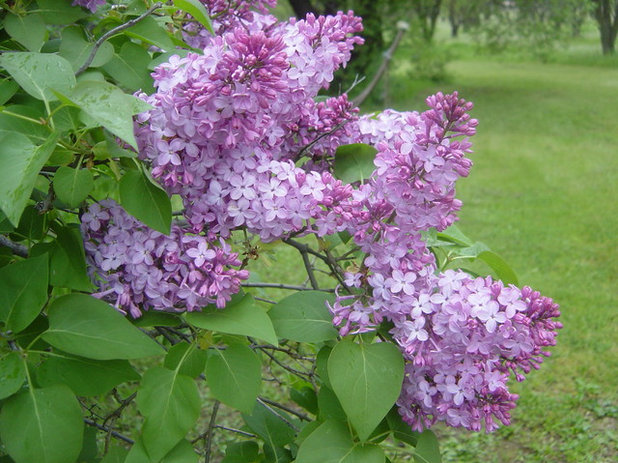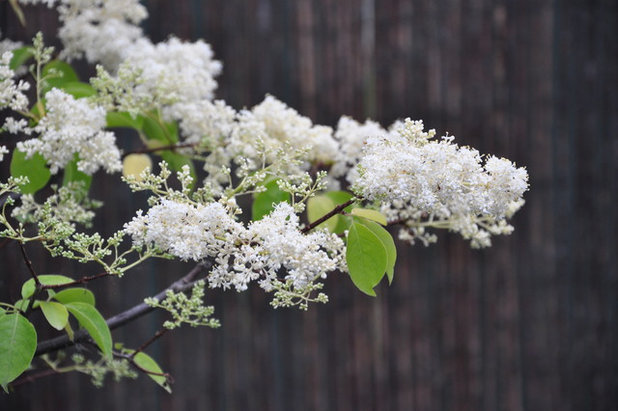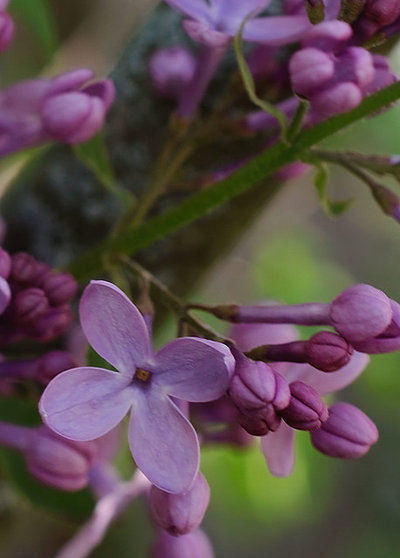“In the Spring," the poet Tennyson tells us, "a young man's fancy lightly turns to thoughts of love." He fails to mention where a young woman's fancy turns. I can speak only for myself, but every spring of my girlhood — as far back as I can remember — my fancy turned to thoughts of crime.
I am a reformed lilac thief.
I don't want to shift the blame or make excuses, but you should know I had a deprived childhood, growing up in a home without our own lilac bush. And my impulses were pure: Lilacs were my mother's favorite flower, and here in Michigan their bloom time almost always coincides with Mother's Day. The church down the street had a magnificent bush, and every May, clutching my basket purse, I made my criminal pilgrimage.
My mother had no tolerance for theft. When I was quite young I shoplifted a single piece of Brach's candy. Upon discovering this (I stupidly asked what B-R-A-C-H-S spelled), my mother immediately turned the car around, marched me back into the grocery store and dragged me to the manager. He was a softie and said it was fine, it was fine, no big deal. But my mother was obdurate: It was not fine. Under her steely gaze I made my sobbing apology and paid a dime, vowing never to steal again — and, as far as shoplifting went, I kept it. My mother had scared me straight.
And yet every spring, when I gave this same woman a bouquet of purloined posies, she received them with rapturous gratitude and never ever questioned their provenance. Apparently in her book, when it came to lilacs, there was no law. I'm happy to say my life of crime ended when we moved to the country and my mother planted a lilac bush of our own.

Dreamy Whites
After my husband and I bought our first home, one of the first things I did was plant a lilac bush on the southwest corner of our house, right outside our bedroom window. When it came into bloom, I would lie in bed and smell the heavenly fragrance. When we looked at our second home, I was pleased to notice a large bush in the backyard and a smaller one on the east side of the house that I could see and smell from our prospective bedroom. I later planted a third, and all three miraculously survived our fire.
Last April a writer I know was leaving for a conference and bemoaned on Facebook that her lilac was just blooming and would finish before her return. I knew she was coming to a conference in my town several weeks after that and thought it just might line up with our bloom time. I didn't know her all that well but impulsively promised to bring her some because the thought of someone missing lilacs altogether was an unthinkable thought. The night before the conference, my lilacs were at their peak, and I dropped off a beautiful bouquet at her hotel.
In Michigan spring can be so capricious. You never know what you're going to get weather wise in April, but by early to mid-May, when the lilacs are blooming, you can be assured it's finally spring. Ironically, the hard winters and long dormancy provide what lilacs need. It's commonly thought that lilacs can't survive in warmer climates because of the heat, but it's the prolonged heat in combination with a mild winter. I was happy to learn there are now a few varieties known as "Southern bloomers" (though many of them were developed in California) that do quite well in warmer climates.

Pamela Bateman Garden Design
The common lilac isn't the most attractive shrub, and it takes up a lot of space. To me it's more than worth it; of course, I have room for it. Fortunately, there are so many varieties available in various colors and sizes and with staggered bloom times. My goal is to add several more varieties so that I have flowers for weeks on end.

Rocco Fiore & Sons, Inc
If you would like to add a lilac to your garden — and I hope you do — there are infinite possibilities. Lilacs thrive in USDA zones 3 to 9 (find your zone). If you're in zones 8 or 9, be sure to select a "Southern bloomer" or one marked for warmer climates. Lilacs require full sun, and once they're established, they are quite easy to care for. They run the gamut on size, from as small as 3 feet tall to stretching to 30 feet.

Pacific Ridge Landscapes Ltd

Dreamy Whites
Now I do understand that a lilac of one's own is not a possibility for everyone, for a number of reasons. If this is you I recommend throwing yourself into the arms of charity. Use the power of social media — I'm not even joking. Look how that worked out for my friendly acquaintance, the writer.

Barbara Pintozzi
Finally, if all else fails, I can recommend some petty lilac thievery — which, if conducted properly, may not even be a crime. Take a drive in the country and eventually you'll come across an abandoned farm, maybe with a ruins of a barn with only the stone foundation and a beautiful stand of lilacs to mark its former existence. Hippity-hop out of your car and get to work.

Anita Diaz for Far Above Rubies
Despite the hardiness of the bush, the flowers themselves are quite delicate. Make sure to have a deep bucket full of lukewarm water as well as a pair of sharp trimmers. I smash the bottom of the branch with a hammer to facilitate the flow of water. Quickly strip the branch of leaves and plunge it into the bucket. If you want a bit of greenery, pick some separately. Once you're home, plunk them in anything. It's impossible to arrange lilacs unattractively.
Enjoy them with a clean conscience.
Great Design Plants: More shrubs for color and beauty in the garden





